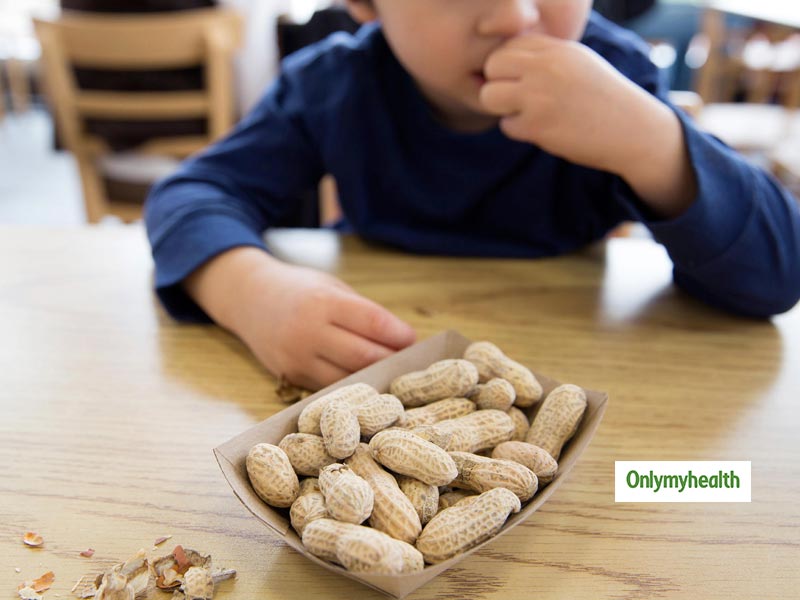
Food allergies in babies are difficult to understand and analyse; one of the most common food allergy witnessed in kids and even newborns are from peanuts. On average, one in 50 babies are affected with peanut allergy and can have symptoms ranging from a mild rash to an upset stomach or a life-threatening reaction. Any inconvenience caused due to peanut in kids should be immediately reported to the doctor. However, as per a research carried out in the Canadian Medical Association Journal, there are some essential tips to understand the need of early inclusion of peanut in the baby’s diet to lower the risk of an allergy.
Table of Content:-
Including peanut protein regularly in the diet may reduce the risk of allergy
Peanut can be introduced between the months of 4-6 of the child’s birth
Infants with atopic dermatitis have higher risks of peanut allergies
Consult a doctor before including peanut protein in infants with a higher risk of allergies
Regular amounts should be given to kids to lower the risk of allergy
Including peanut protein regularly in the diet may reduce the risk of allergy

In a trial held by CMAJ, o640 infants under the age of 11 months, 3.2 per cent of the lot, who were fed peanut protein had symptoms of peanut allergies almost five years later than the 17.2 per cent of kids who did not. This study chalked out the need for inclusion of peanut protein in the form of peanut butter to kids for better resistance to the allergy.
Peanut can be introduced between the months of 4-6 of the child’s birth
To reduce the chances of peanut allergy in infants, it is advisable to introduce a smaller amount of peanut protein in kids starting from the 4th month of their birth. Peanut protein can be taken in the form of peanut butter or peanut flour.
Infants with atopic dermatitis have higher risks of peanut allergies

Severe atopic dermatitis in infants; there are more chances of getting peanut allergies. The family having a higher consumption of peanut add to the possibilities. In this case, if the infant suffers from severe atopic dermatitis, start including peanut protein in the infant’s diet, with recommendations from the doctor. Consult a paediatric and ensure that all parameters are followed to ensure extreme reactions from peanut.
Consult a doctor before including peanut protein in infants with a higher risk of allergies

It is essential to keep a doctor in the loop before adding peanut protein in kids with a higher risk of allergies. Allergy testing is necessary to check the level of allergy in infants. Tests like skin-pricking are recommended for infants. Kids with eczema also have a higher risk of getting a peanut allergy and should be accordingly tested before inclusion of peanut protein in the diet.
Also Read: India ranks second highest in the number of obese children in the world
Regular amounts should be given to kids to lower the risk of allergy
Just giving peanut protein once in a week may not reduce the allergy risk. However, as per the journal, eight grams of peanut butter should be given to the infant at least twice in a week to lower the chances of the allergy.
Symptoms of Peanut Allergy
To understand the need for including peanut protein in the diet of infants, here are some characteristics of a peanut allergy:
- Difficulty in breathing, swallowing, excessive coughing immediately after eating peanut
- The skin and lips turn blue quickly or a few minutes after eating protein
- Clammy skin
- The infant seems faint after eating peanut
- Sudden unconsciousness in extreme cases
Read more articles on Children’s Health
How we keep this article up to date:
We work with experts and keep a close eye on the latest in health and wellness. Whenever there is a new research or helpful information, we update our articles with accurate and useful advice.
Current Version